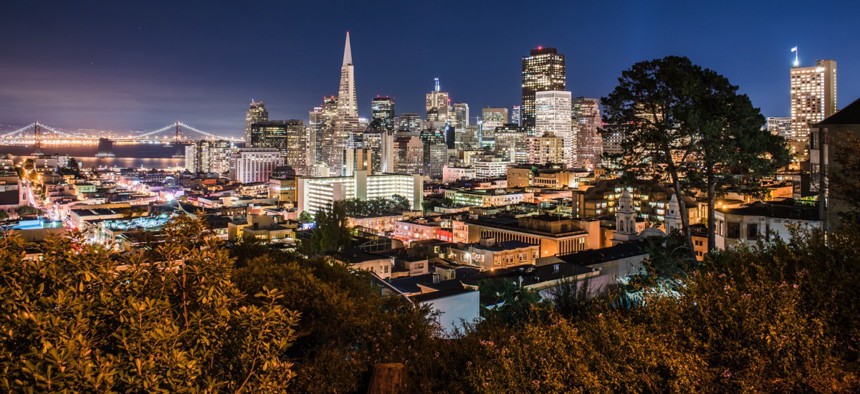Report Looks at Ways to Close San Francisco's Digital Divide

San Francisco, California Shaun Jeffers / Shutterstock.com

Connecting state and local government leaders
A Municipal Fiber Advisory Panel is looking at options to bring affordable, high-speed broadband Internet connectivity to all residents.
Officials in San Francisco want their city to be the nation's largest with universal broadband connectivity, and while that effort is still in its infancy, they took a big step this week to figure out the way forward.
Nine months ago, San Francisco Board of Supervisors member Mark Farrell requested a Budget and Legislative Analyst report on San Francisco implementing low-cost, gigabit-speed Internet citywide. That study that was released Tuesday.
Farrell announced the complementary creation of a Municipal Fiber Advisory Panel to guide network expansion.
The stakes are high in San Francisco. If a city widely considered a global capital of innovation can’t close its “digital divide,” what hope do others have?
“If any city can tackle the digital divide and bring gigabit-speed Internet to everyone, it’s San Francisco,” Farrell said during a media briefing on Tuesday.
But there's a lot of work to do.
A growing number of city officials nationwide view broadband no longer as a luxury but as essential infrastructure, according to the report, and the next-generation standard of 1 gigabit per second is only available to 2.6 percent of San Franciscans.
San Francisco’s digital divide is “real” and “damaging,” Farrell said.
Worse still, more than 100,000 residents—every 1 in 8 people—lack Internet service entirely, including 14 percent of public school students. An additional 50,000 San Franciscans rely on sluggish dial-up, and city leaders like Farrell worry the disparity is stifling competition for jobs.
Local seniors struggle to acquire Internet skills because only 69 percent over the age of 65 have online access, according to the report.
A public, demand-driven approach to delivering high-speed broadband would have the city construct network connections when customers subscribe to the service. Construction would cost an estimated $393.7 million and annual debt service $103.2 million, according to the report, but the network wouldn’t include every resident and business like Farrell wants.
Conversely, a public, utility-based model would see San Francisco connect all premises at the time of construction, which would run about $867.3 million followed by annual costs of $231.7 million. Subscriber revenue would be $86.3 million a year, leaving a $145.4 million annual deficit.
Private operation wouldn’t cost the city anything, but experts don’t believe the approach feasible.
Instead of San Francisco starting a fiber enterprise and then assuming control, the city could share the costs of construction with one or more partners in a public-private partnership. Charging a utility fee up to an average $26 a month for baseline Internet could cover operations with that number decreasing if premium services were offered to offset costs and commercial customers charged based on use.
Farrell seeks a publicly owned solution that completely closes San Francisco’s digital divide while remaining as cost effective as possible, perhaps using subsidies to help low-income households. That would rule cheaper, demand-driven options out, so San Francisco’s Chief Information Officer Miguel Gamiño and Chief Innovation Officer Jay Nath will co-chair the panel of experts that will start examining alternatives starting in April.
Providing Internet access to youth, families, entrepreneurs and artists regardless of economic status is the working group’s goal, according to the co-chairs, who are open to the idea of a public-private partnership to scale the network.
“As connectivity increases so does demand,” Gamiño said.
Previously on Route Fifty: "A New Google Fiber Model Will Take Shape in Huntsville"
Dave Nyczepir is a News Editor at Government Executive’s Route Fifty.

NEXT STORY: D.C. Metro's Emergency Closure Tests New General Manager





